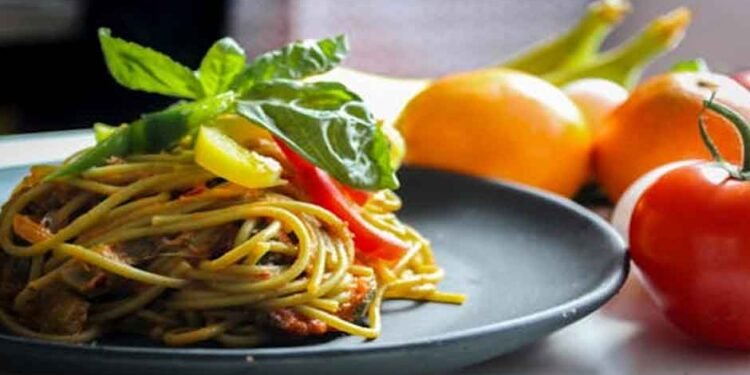Italian cuisine holds a special place in the hearts of food enthusiasts around the world. Renowned for its rich flavors and minimalistic ingredient list, Italian food is more than just a meal—it’s a celebration of life’s simple pleasures. Bringing the authentic taste of Italy into your kitchen is less about strict recipes and more about mastering a few foundational techniques and understanding the importance of quality ingredients. Whether you’re a beginner looking to cook spaghetti for the first time or a seasoned chef aiming to perfect your pesto, these essential tips will help you create delicious, authentic Italian meals right at home.
1. Use Quality Ingredients
The secret to standout Italian cooking doesn’t lie in complicated techniques but in the ingredients you use. High-quality, fresh ingredients are the foundation of Italian dishes. Start with extra virgin olive oil, which should be fragrant and vibrant. Investing in a bottle from a recent harvest can enhance everything from salads to sautéed dishes. Cheeses like Parmigiano Reggiano or Pecorino Romano are worth seeking out in their authentic forms rather than settling for less flavorful domestic versions. For tomatoes, whether you’re making a sauce or a fresh caprese salad, choose ripe, intensely flavored varieties like San Marzano, which are grown in volcanic soil, for that distinctive taste. With these staples, your Italian cooking will have a strong, authentic foundation.
2. Mastering Italian Sauces
The heart of many Italian dishes is the sauce. A great starting point for many classic sauces, from marinara to ragù, is the soffrito. This mix of finely chopped onions, carrots, and celery sautéed in olive oil offers a rich base that infuses the dish with depth and warmth. Sauté these ingredients until they’re soft but not browned, as the goal is to sweeten and mellow their flavors. This base not only provides a subtle backdrop to the pronounced flavors of tomatoes or meats that will join them but also elevates the entire dish, enhancing its complexity and taste.
3. Perfecting Pasta
Choosing the right pasta shape can make a significant difference in your dish. Match thicker, heartier sauces with broader noodles like tagliatelle or pappardelle, which can hold more sauce. Lighter, oil-based sauces, such as aglio e olio, pair well with spaghetti or linguine. The most crucial pasta tip, however, is cooking it to al dente, which means it should be firm to the bite. To achieve this, use plenty of water—about four quarts per pound of pasta—and add salt generously to enhance the pasta’s flavor. Start tasting the pasta a couple of minutes before the package’s suggested cooking time to ensure you don’t overcook it.
4. Cooking with Fresh Herbs
Fresh herbs like basil, oregano, and parsley play starring roles in Italian cuisine. To maximize their flavor, add herbs like basil or parsley towards the end of the cooking process so they retain their vibrant color and essence. In contrast, more strong herbs such as rosemary or thyme can be added earlier as they release their flavors over time. Chopping herbs just before adding them to your dish will also help preserve their fragrance and potency. A simple brush of fresh herbs can elevate a simple dish to something truly special, embodying the fresh, aromatic qualities of Italian cooking.
5. The Art of Risotto
Risotto, the quintessential Italian comfort food, requires attention and care to perfect. The key to a creamy, velvety risotto lies in the slow cooking process and constant stirring. Start by toasting arborio rice in a bit of olive oil or butter to ensure each grain is coated and ready to absorb the liquid. Gradually add warm broth—vegetable, chicken, or beef—stirring continuously. This slow addition of liquid is crucial as it allows the rice to release its starch, which thickens the broth and creates the signature creamy texture of the dish. Season lightly as you go to adjust flavors and ensure the rice is just tender to the bite. Finish with a generous sprinkle of freshly grated Parmesan cheese for an extra layer of flavor.
6. Homemade Pizza
Nothing characterizes Italian casual dining like a good pizza. The journey to an excellent homemade pizza begins with the dough. Mixing a simple dough from water, yeast, flour, and a pinch of salt, then kneading it to develop gluten, sets the foundation for a great crust. Let the dough rise until it doubles in size to ensure it’s light. When shaping your dough, avoid the rolling pin; instead, use your hands to stretch it out gently. This method preserves the dough’s air bubbles, resulting in a lighter crust. Top it with a simple sauce made from crushed tomatoes, fresh mozzarella, and basil leaves. Remember, a hot oven is crucial—preheat your oven as high as it will go and use a pizza stone or steel to mimic the effect of a traditional pizza oven.
7. Italian Meats and Fish
Italian cuisine features a variety of meat and fish dishes, each with its preparation style that enhances the natural flavors. For meats, techniques like braising and grilling are popular. Dishes such as Osso Buco or Chicken Parmesan highlight the Italian knack for enhancing the meat’s flavor through slow cooking and rich, tomato-based sauces. When it comes to fish, simplicity is key. A simple preparation such as grilling or pan-searing with a splash of lemon juice often suffices. Whether it’s a delicate piece of seabass or a hearty steak of swordfish, cooking should respect the ingredient’s natural flavors, complemented subtly with herbs and spices.
8. Desserts and Coffee
No Italian meal is complete without dessert and a strong coffee. Classic desserts like tiramisu, a coffee-flavored layered dessert, or Panna Cotta, a smooth custard made with cream and gelatin, are beloved finishes. These desserts are not just treats but a grand finale to the dining experience. Equally important is the Italian coffee culture, which is integral to the lifestyle. Learning to brew a strong espresso or a frothy cappuccino at home can transport you to an Italian café. Invest in quality coffee and practice your brewing techniques to serve the perfect cup.
Conclusion
Embracing these tips will not only elevate your Italian cooking skills but also deepen your appreciation for the nuances of Italian cuisine. From the foundational elements of high-quality ingredients and fundamental techniques to the finishing touches of a classic dessert and a well-crafted coffee, each step offers a piece of Italy’s culinary heritage. Experiment with these elements in your kitchen, and each meal will become a testament to the rich, flavorful, and heartfelt tradition of Italian cooking. Enjoy the journey of culinary exploration and share it with friends and family, as true Italian dining is as much about community and conversation as it is about food.












